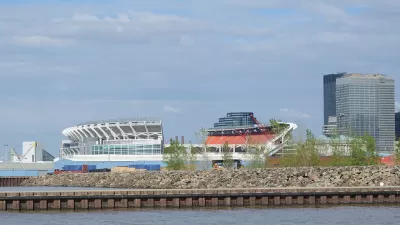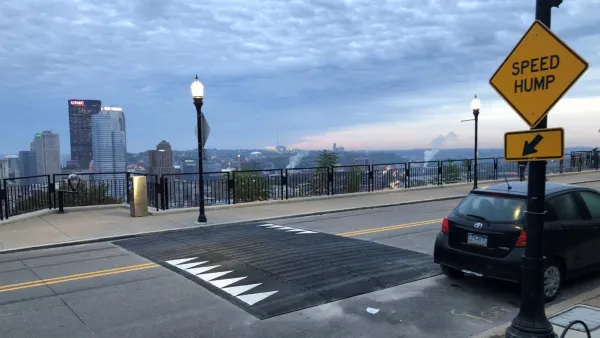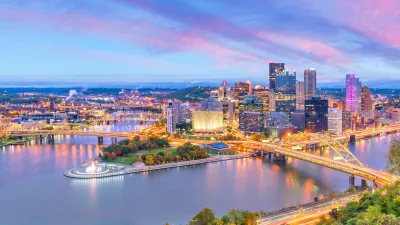A garden in Pittsburgh has become the model for a movement to combine environmental reclamation with economic development.
The long-abandoned coal mine where the Pittsburgh Botanic Garden now sits was not, at first, considered a high priority for rehabilitation. Though plagued by high concentrations of aluminum in its central pond, the site didn't meet the criteria to be classified as "brownfield."
But now the garden is one beneficiary of a new $30 million state grant program that is taking a different approach to environmental remediation: targeting sites that have the greatest potential for economic development, rather than the greatest ecological need. Where reclamation programs have traditionally sought to "simply restore damaged land to its original condition and eliminate public health hazards," a 2016 Congressional authorization allowed states like Pennsylvania to put clean-up funds toward community development projects on the site.
The botanic garden, which serves 25,000 visitors a year, is one of 14 pilot projects throughout Pennsylvania to receive this funding. An underground treatment system to de-acidify the pond has already been implemented, and the grant monies will be used to create new curated gardens and recreational areas for public access.
FULL STORY: Where coal was once mined, a garden now thrives

Planetizen Federal Action Tracker
A weekly monitor of how Trump’s orders and actions are impacting planners and planning in America.

Congressman Proposes Bill to Rename DC Metro “Trump Train”
The Make Autorail Great Again Act would withhold federal funding to the system until the Washington Metropolitan Area Transit Authority (WMATA), rebrands as the Washington Metropolitan Authority for Greater Access (WMAGA).

DARTSpace Platform Streamlines Dallas TOD Application Process
The Dallas transit agency hopes a shorter permitting timeline will boost transit-oriented development around rail stations.

Renters Now Outnumber Homeowners in Over 200 US Suburbs
High housing costs in city centers and the new-found flexibility offered by remote work are pushing more renters to suburban areas.

The Tiny, Adorable $7,000 Car Turning Japan Onto EVs
The single seat Mibot charges from a regular plug as quickly as an iPad, and is about half the price of an average EV.

Supreme Court Ruling in Pipeline Case Guts Federal Environmental Law
The decision limits the scope of a federal law that mandates extensive environmental impact reviews of energy, infrastructure, and transportation projects.
Urban Design for Planners 1: Software Tools
This six-course series explores essential urban design concepts using open source software and equips planners with the tools they need to participate fully in the urban design process.
Planning for Universal Design
Learn the tools for implementing Universal Design in planning regulations.
Municipality of Princeton
Roanoke Valley-Alleghany Regional Commission
City of Mt Shasta
City of Camden Redevelopment Agency
City of Astoria
Transportation Research & Education Center (TREC) at Portland State University
US High Speed Rail Association
City of Camden Redevelopment Agency
Municipality of Princeton (NJ)





























